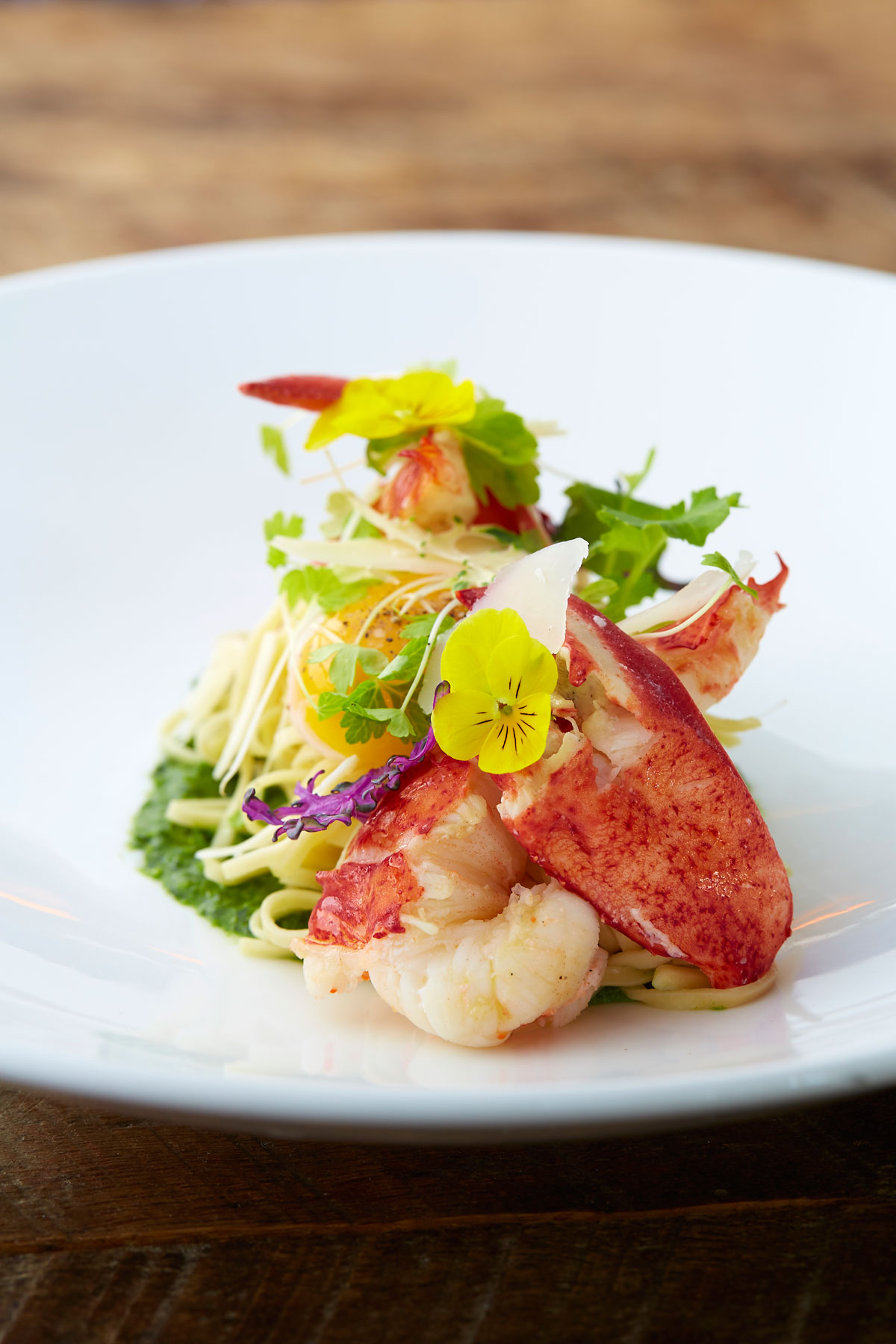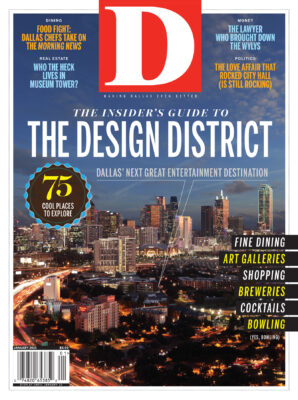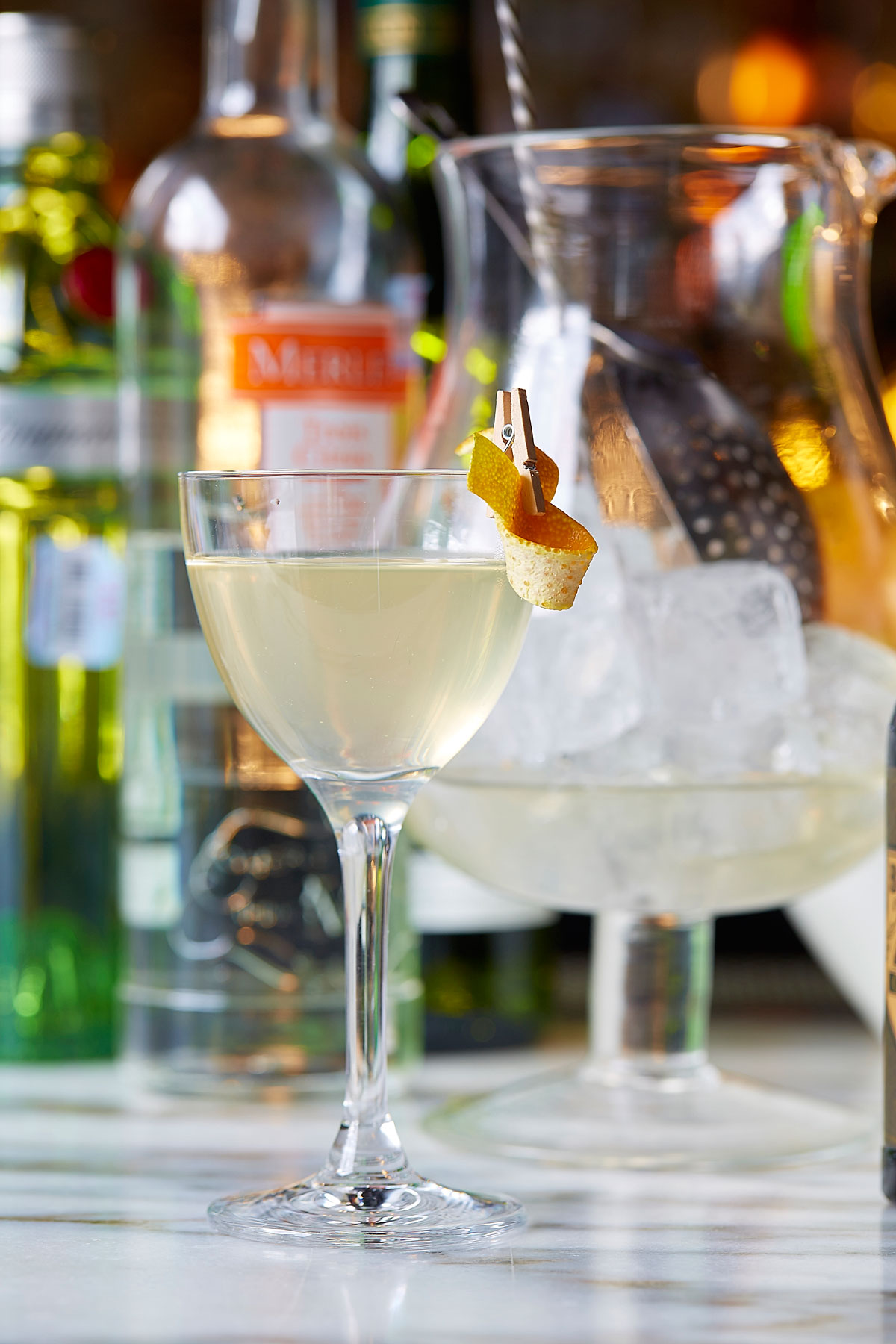
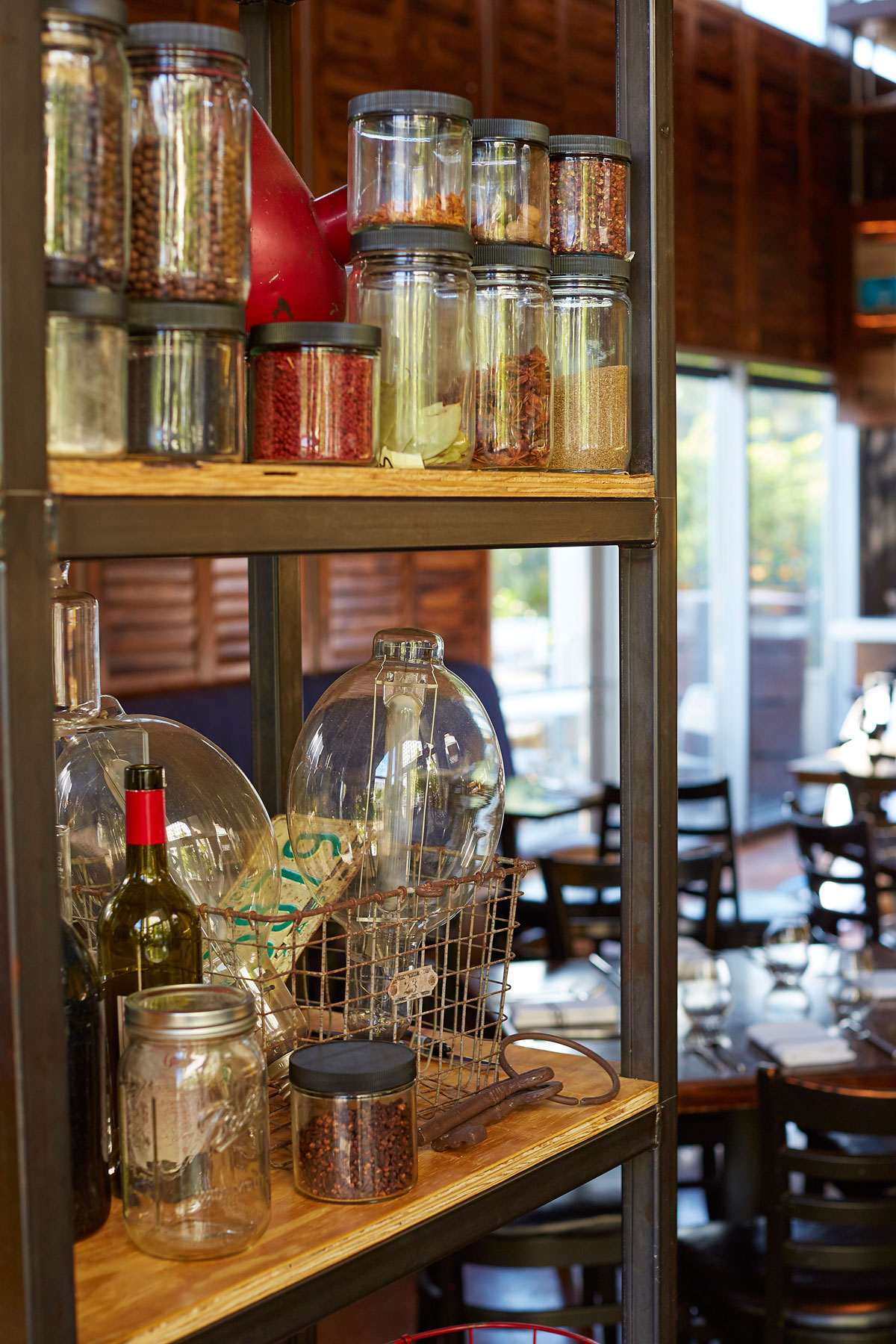
The decor is the first clue. On prominent open shelves, a vintage typewriter is clearly decorative. But elsewhere, jugs of oil, Tetra Paks of juice, and a workman’s ladder crowd in, the utilitarian mixed pell-mell with the artful. Our waitress explained that the dry-aged New York strip steak priced at $125 is cured in Himalayan sea salt and that we could order boutique meats by the ounce. Meanwhile, the shelf under which we sat was crowned with a box of toilet paper. We were in the land of mixed messages.
The bar is incontestably central, glittering at the back of the room like an Emerald City. This is the kingdom of cocktail genie Martensen, a James Beard Award semifinalist whose work at The Cedars Social helped herald a new cocktail scene. “Dallas was in this horrible, syrupy martini world. Just nasty stuff,” he remembers. “No one was using fresh juice or making fresh syrups or looking up old recipes.” He has a knack for the zing of tart flavors balanced perfectly with the sweet and the fresh. Ingredients like peach shrub and lime curd make unexpected and delightful appearances. Each drink, no matter the proof, is imaginative and balanced.
The best dishes, too, have a fairy-wonderland quality that makes you forget everything but the little world in front of you. On our first visit, a Lilliputian landscape was set before us: baby braised radishes, daintily tipped with butter like chocolate-dipped strawberries and arrayed on rye crumb “dirt,” their leafy tops simulating a miniature garden. It was a clever wink at the French classic of radishes with butter and salt. On a dish of roasted cauliflower and farm cheese, delicate truffle shavings—earthy, deep, and satisfying—had the grace of fallen petals. The bone marrow was sumptuous. Warm marrow, tomato jam, and hazelnut gremolata melded superbly in a halved bone’s hollow, toasts served alongside. There was a lot going on—crunchy, unctuous, savory-sweet—but the staging was precise, inspired. We scooped shamelessly to the bone.
The best dishes, too, have a fairy-wonderland quality that makes you forget everything but the world in front of you.
Frequently, though, the spell was broken. Expectations reversed, assumptions upended for the worse. From a burrata, I crave sensual silkiness. Baked, it was a mess of oil and string cheese, utterly denatured. The fondue tart was no tart at all, but an ungainly pastry puff, weighted down with cooled, congealed cheese and crowned awkwardly with globules of salmon roe. Both dishes played with classics. Both felt like blunders, missing the point. Another dish started well. Hamachi paired with foie gras brought gamey meatiness and sweetness into perfect union—a brilliant marriage. But it was served with a graceless potato latke that did nothing for the dish but add crunch and fat. The strangest and most absurd: a miniature skillet arrived with a towel tucked under it, everything suggesting heat. Inside was an ice-cold panna cotta and sous vide egg whose yolk was cold as an arctic sunrise. Moments like this left us perplexed.
The effect Martensen and Jafar are going for is the opposite: warmth, coherence. Martensen has a deep belief in the communal nature of food. “The restaurant business is probably the oldest business in the world,” he says. “When man got fire, he started cooking. Whoever had the best antelope, or whatever he was cooking, had a lot of friends.” The goal is to remind diners that “once you break bread with someone, it’s a very intimate experience. The idea is to have things that remind you of family. When Grandma would come out with a big pot roast. As a child, I loved that. We want to be this warm and welcoming establishment.”
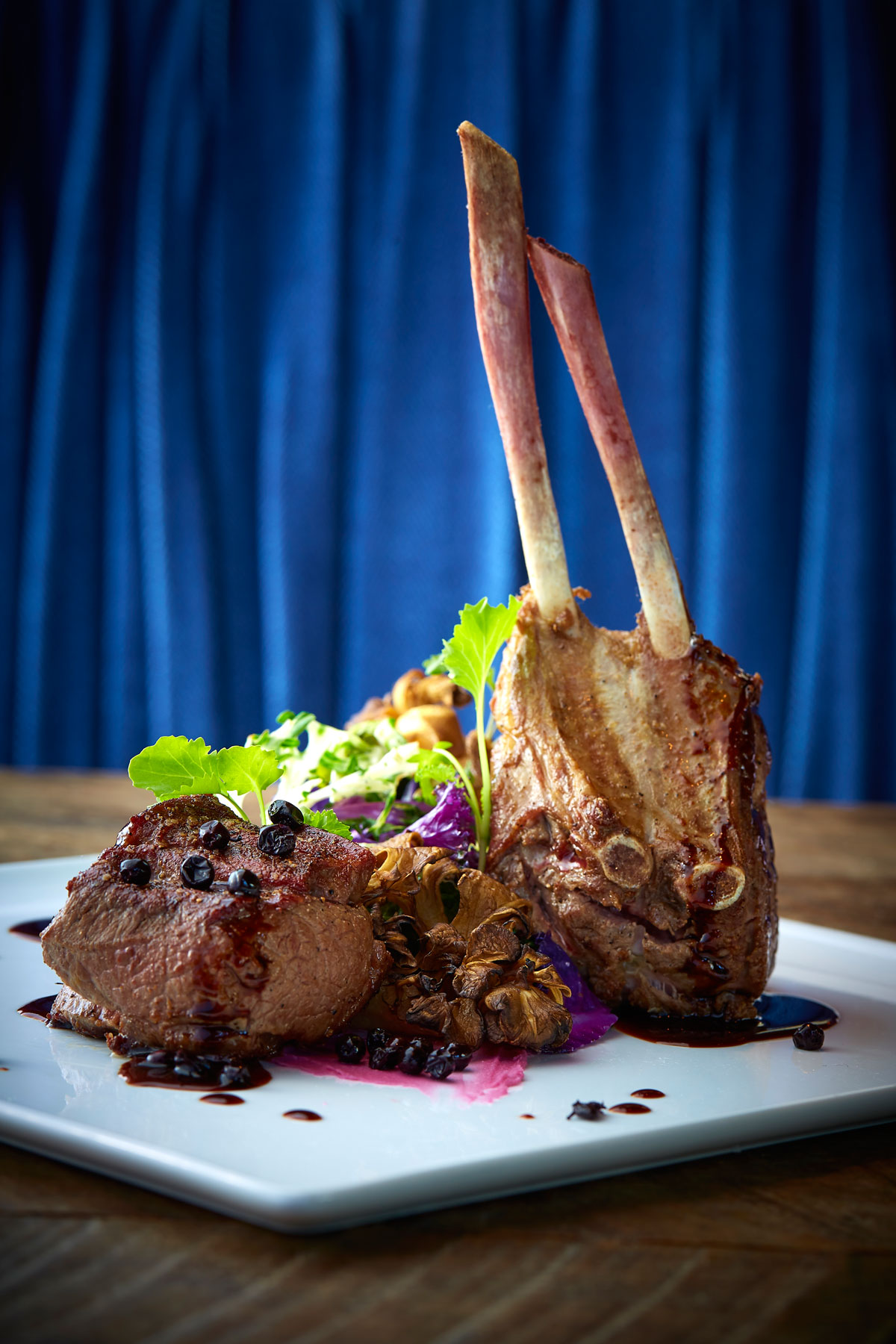
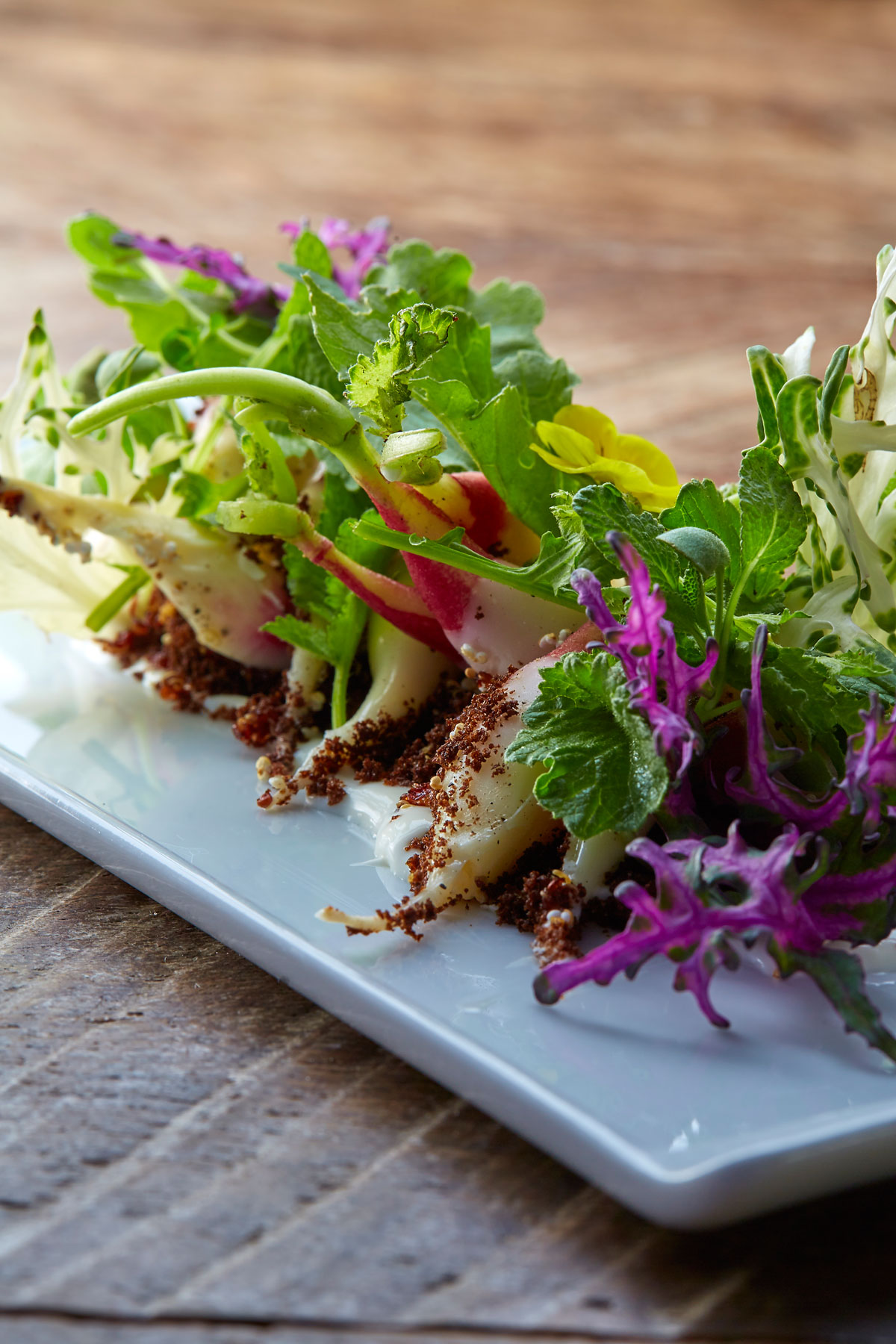
On a stormy night, the atmosphere was everything Martensen wanted—cozy, enchanting—as we savored a mini French press of coffee and an anise-infused cake made especially for Dia de los Muertos. All around was the chatter of a pre-symphony crowd. It was like Prospero’s magical feast in The Tempest. A little chill sets in with the bill (that single coffee was $6). It can seem like they hired consultants to hit all the items diners expect and that command high prices—which might even work if everything were as magical as the dishes that are worlds of their own. But those worlds are like islands. In this bar and curiosity cabinet and utility closet and palace of fantasies, Proof + Pantry is trying to do many things, not all of which are intuitive. Be warm and friendly; create beauty on the plate; blend the homey with the avant-garde. The equation becomes this + that; X + Y. The result can feel like the absurdist Italian play Six Characters in Search of an Author. There are wonderful things in both bar and pantry. What’s needed is the equation that brings it all together.


